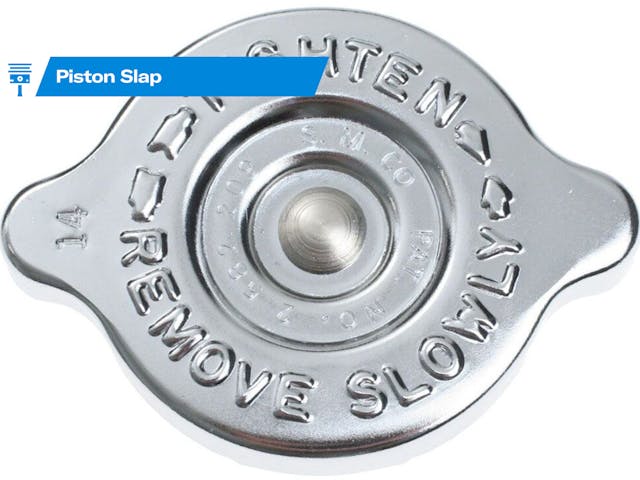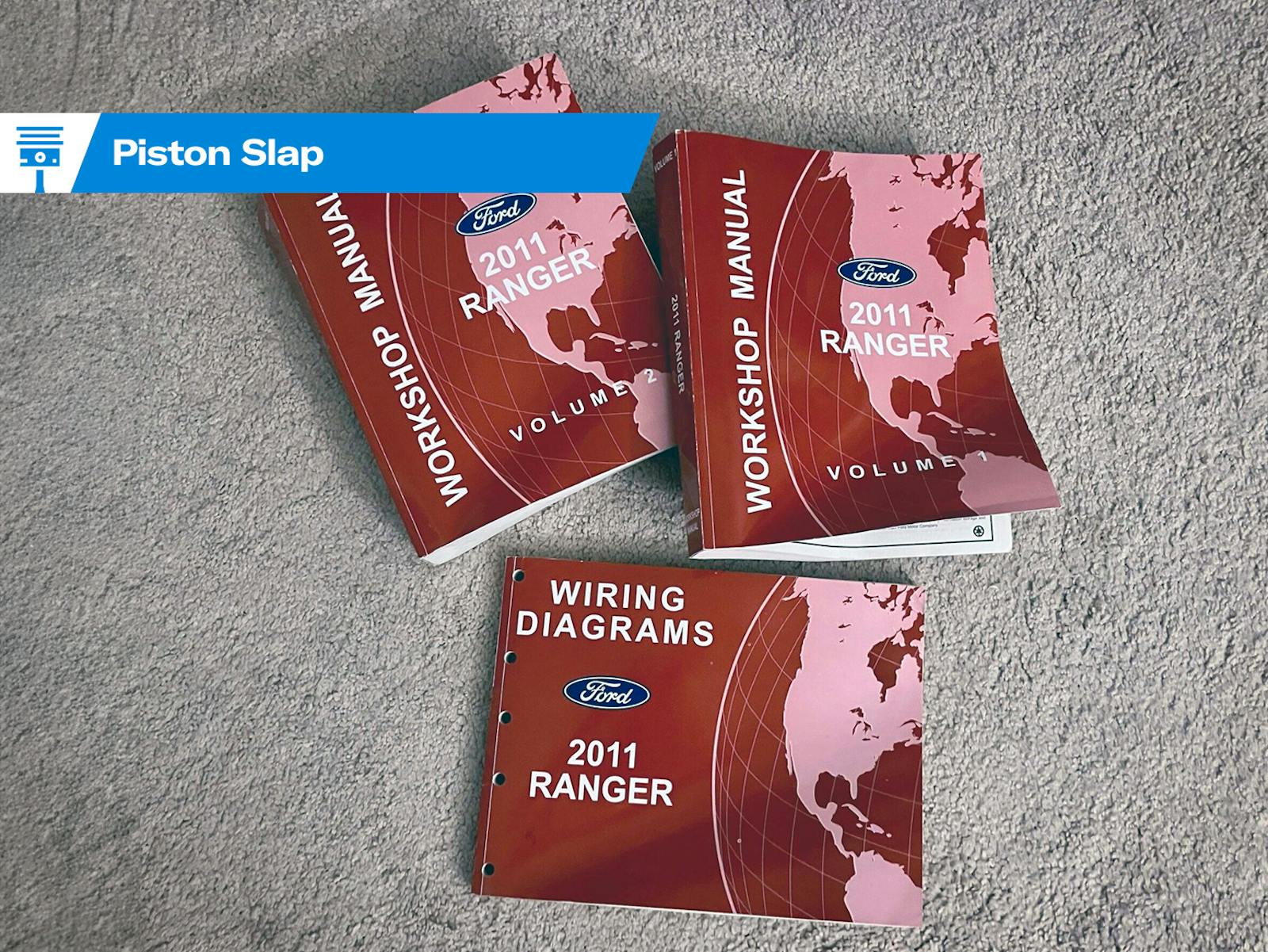Piston Slap: Capping off another Mustang maintenance item?
Bill writes:
Hi,
I am the original owner of a 1965 Mustang (289-cubic-inch engine displacement, two-barrel carburetor, three-speed transmission) and it has just been restored and the engine rebuilt. On the rebuild I ported and polished the heads, had a three-angle valve job, and had a windage tray put in. The car now overheats. I checked the timing at 12 degrees, set the dwell and set the carburetor to my altitude of 7000 feet. The thermostat is 160 degrees Fahrenheit (I checked and opens at 165 degrees).
I have a 34-ounce overflow can, but it appears the car is sometimes putting out 35–36 oz of my water/antifreeze mix.
What’s going on?
I did notice the lower radiator hose does not have a wire in it and am wondering if it is collapsing. I checked several parts houses and I guess now radiator hoses do not have a wire in the bottom hose. I was thinking about putting a Stant high-flow thermostat in and I am not sure where to go next.
Sajeev answers:
This is a fantastic question, which I hope will lead to a thought-provoking answer. This problem proves that many automotive components are wear items in need of regular replacement—well, that’s provided you keep the car long enough. And clearly that’s the case with Bill and his one-owner Ford Mustang.
Be it rubber bushings, shocks, headlight bulbs, or a radiator cap, certain items that don’t last more than a few years. Halogen headlight bulbs can still illuminate poorly after two to three years of heavy night driving, but you won’t see the road because the filaments are trashed. Same thing with radiator caps: I suspect yours isn’t holding the correct amount of vacuum (when being tested) and is therefore letting too much coolant transfer to your overflow can.
You can absolutely test your cap to see if it holds the correct amount of vacuum, but considering the application, I’d just get a new one.
That’s because a replacement Mustang radiator cap is both period-correct and affordable from Scott Drake. I’ve changed the radiator cap four times on my 1988 Mercury Cougar with 205,000 miles of heat cycling, but one of those was because I got a defective “lever” type release. Never again!

More to the point, I’d avoid the lever type, especially when Mustangs have a replacement available from the legendary Scott Drake. But what if it still overheats? Well, maybe you are on to something with collapsing radiator hoses. That said, I am pretty confident in my assessment of a failed radiator cap on this 1965 Mustang. What say you, Hagerty Community?
***
Bonus! A Piston Slap Nugget of Wisdom:
While I am leery of old radiator caps, that sentiment often changes when dealing with caps that aren’t directly connected to the radiator. Newer systems pressurize the overflow tank, burying the radiator further away from our hands as the cap is no longer part of that equation.

These newer systems seem to be easier on their caps. So, depending on your application, take my advice with an even bigger grain of salt.
***
Have a question you’d like answered on Piston Slap? Send your queries to pistonslap@hagerty.com; give us as much detail as possible so we can help! Keep in mind this is a weekly column, so if you need an expedited answer, please tell me in your email.
Check out the Hagerty Media homepage so you don’t miss a single story, or better yet, bookmark it.



very poor article with lead of piston slap and zero word about it.–even clicking on the text info for p-s just get the same crap about coolant cap! this after clicking 5 star-is this article a good use of time-pop up—I’m 81 years old and tired of this kind of BS–plus I am a hunt and peck typer-but po ed enough to write this!!!
Piston Slap is the name of Sajeev’s auto help column.
It’s been my experience that the #1 cause of overheating in old cars is a faulty radiator, either clogged or having scale deposits internally. There is no real repair other than a replacement. The aftermrket now makes replacement aluminum radiators, which will work nicely even if they don’t look original.
My experience is that a failed radiator cap is usually only a problem during high speed driving, failing to contain higher pressures and allowing coolant to escape.
I did have a rare failure of the hose frm the radiator to the overflow tank. The end of the hose clogged. Coolanrt could go out into the tank, but the vacuum was not strong enough to draw it back into the engine when it cooled.
A defective water pump could be allowing air to be drawn into the system past the pump seals, forcing the coolant out. Rare, but I have seen it happen.
If the car has a fan clutch, a failure of the clutch can cause overheating at idl or los speed.
Good luck.
Sorry Sajeev, gotta call you out on this one. Radiator caps don’t need to hold vacuum, they need to hold pressure, yet be able to vent it when it exceeds its rating. Cooling systems, especially those on the vintage cars we favor, are usually easy to diagnose before deciding what to buy: verify the system is topped up and the water pump belt is in place and snug. Warm up the engine with the cap off and the heater on. Both heater hoses should get warm pretty quickly. When the thermostat opens you should see coolant splashing vigorously into the radiator. If these don’t happen find out why coolant isn’t circulating. If it checks out so far put the cap on and go for a drive keeping the heater on. Runs OK at idle but gets hot at speed? Radiator probably not shedding heat to the air well enough any more. Overheats in traffic but cools down while moving? Lack of airflow. Check for too many moths in the fins and that the shroud is in place and fits well. If the heat blows cold at any time, coolant has stopped circulating. Hope this helps!
Oof, that’s embarrassing. Thanks for noticing that, I have added “when being tested” to the part about vacuum, as that’s the only time when vacuum should be discussed.
Tinkerah gives excellent advice regarding keeping the bugs and garbage cleaned out of the front of a cars radiator. Amazing how much those things can reduce your radiators cooling capacity and ability. I do this as part of regular routine maintenance on both the “toy” cars and check it periodically on the DD’s as well.
Owner of very original ’66 Mustang w/ 289 C-code. Years ago I swapped the original 2-row radiator to a 3-row w/ same o’all size/black color. (Available via various on-line Mustang parts outlets.) What a difference, especially on hot days in SoCal! No more worries about the temp gauge creeping up too high.
That is also excellent advice. Thank you for adding this to the conversation!
Regarding the original question about the lower radiator hose- overheating at high RPM but cooling off at idle might point towards the hose collapsing.